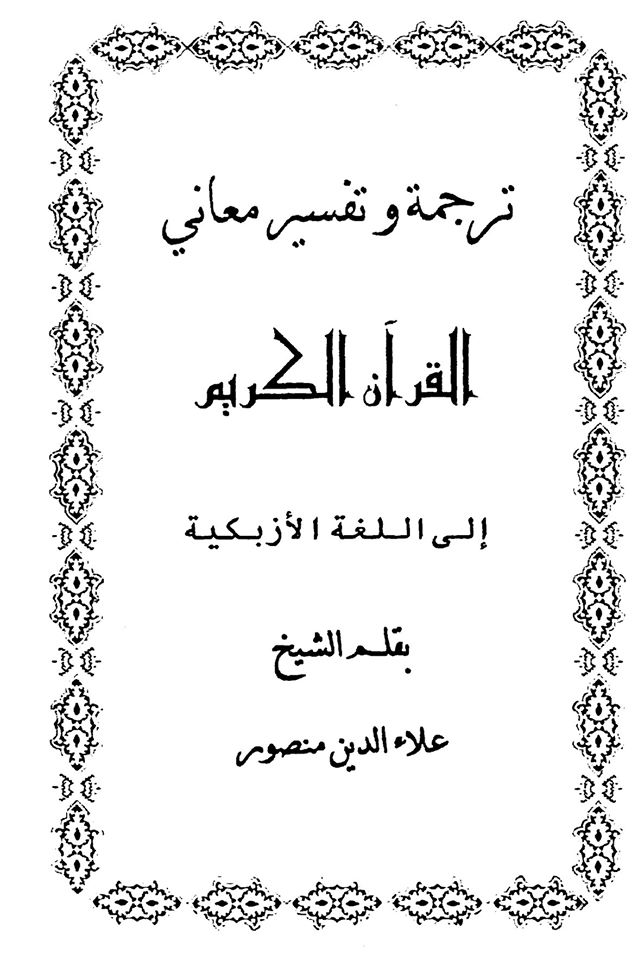It is not unusual that a Qur’an translation becomes a source for translations into further languages, but what about a single translator who produces his work in five languages?
That is the fascinating story behind the “Kur’oni Karim. Uzbekcha izoxli tarjima” (“The Noble Qur’an: Annotated Translation into Uzbek”) by Alouddin Mansur. Born in 1952 in Qorasuv town, Alouddin Mansur received his primary Islamic education in Soviet Uzbekistan and later became an influential religious leader. Around 2000, he established the Center for Qur’anic Studies in his home region; its aim was to promote both translations and commentaries into the languages of Central Asia.
This translation of the Qur’an into the Uzbek language first appeared in its complete form in 1992 (parts of the translation were previously printed in Shark Yulduz, “Star of the East” journal). Translated in accordance with mainstream Sunni tradition, it contains quite a detailed introduction to each surah, plenty of explanatory interpolations as well as special comments. Despite the extensive use of the Islamic exegetical tradition (both classical and modern tafsirs), the comments are mostly presented in an easy style to reach a broad audience of Muslims. Mostly they explain historical context and ethical and ritual issues, while avoiding deep theological discussions. The names of suras are provided in Uzbek transliteration from Arabic; furthermore, the text contains many Arabisms widely used in the religious vocabulary of the Uzbek language. What is also significant in relation to the style is that some verses are written continuously and form a kind of meaningful paraphrase. For example, Surat al-Baqarah verses 2-3, 26-27, 72-73 and some others are not separated from each other and translated as a single entity.
Reprinted several times, the translation became outstandingly popular among all kinds of readers. Only in the late 2000s did new translations into Uzbek (like the ones by Muhammad Sodik (1952 – 2015) as well as Abdulaziz Mansur) challenge its acceptance. Interestingly, both aforementioned scholars were members of the editorial committee working with Alouddin Mansur previously and approving his work. Mansur did not stop with his first translation; in 1995, the Turkmen version of this work appeared, and a few years later Kyrgyz (1999), Uygur (2003) and Kazakh (2006) versions were published with the permission and active participation of Mansur himself. This translation also became a main source for the first Qur’an rendition into the Crimean Tatar language (complete edition appeared in 1998, by Riza Fazil). At least the Kyrgyz version is still highly successful, despite some later interpretations currently available in print (like the one by Shemsuddin Kabulov, 1433/2011, published by the King Fahd Qur’an Printing Complex).
Mykhaylo Yakubovych


